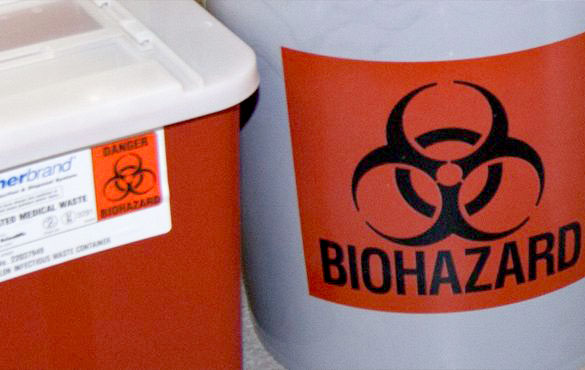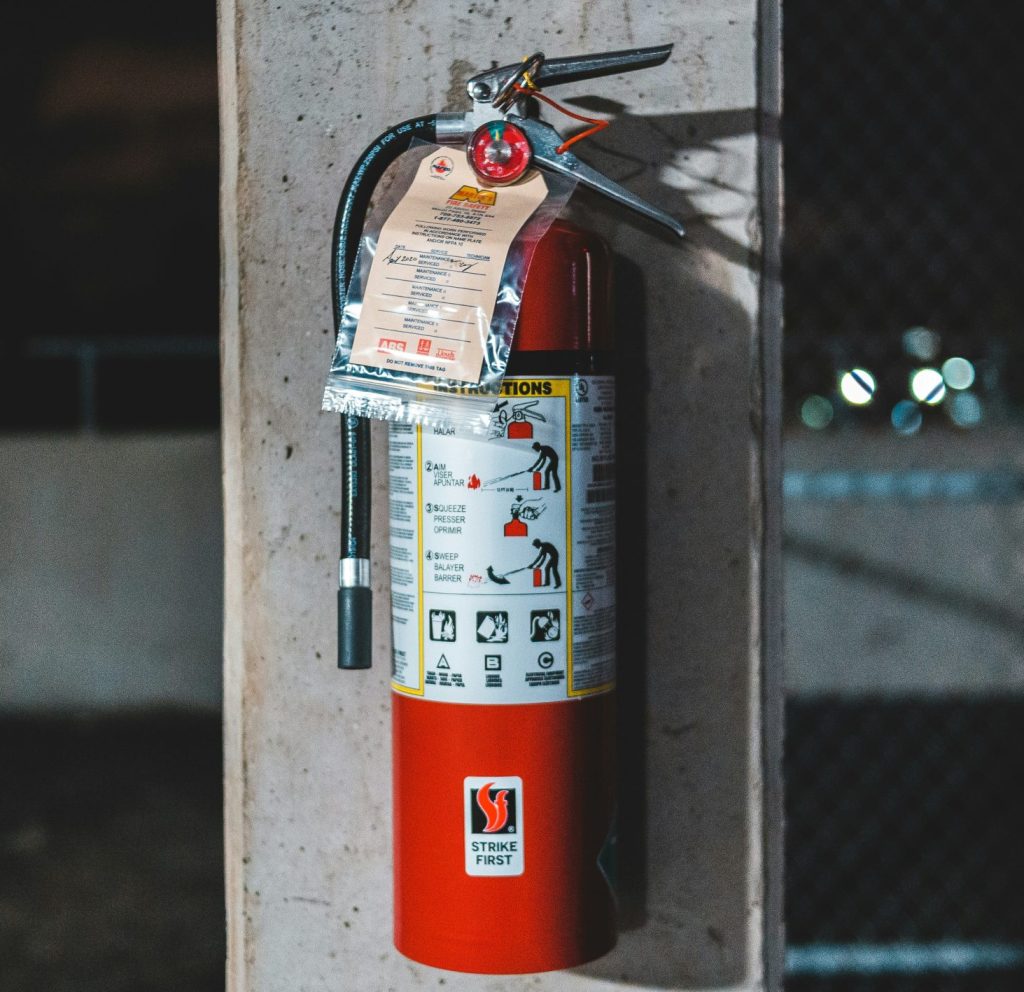Physical Hazards
Protecting faculty, staff, and students from occupational physical hazards caused by exposure to excessive temperatures, noise, electrical hazards, falls and falling objects, or confined spaces is best achieved by adopting and implementing the applicable the University of Michigan (U-M), EHS guidelines and by developing, where necessary, departmental programs to address these physical hazards.

Faculty, staff, and students exposed to temperature extremes or heat indexes above 91°F are at risk of experiencing a heat stress-related incident including heat stress, heat exhaustion, and heat stroke. Such environments include:
- Working in temperatures or a heat index above 91°F
- Working around radiant heat sources
- Having direct physical contact with hot objects
- Engaging in strenuous physical activities in hot environments
- Wearing personal protective equipment
Heat Stress Program
EHS manages the heat stress program for U-M. The Heat Stress Program provides guidance to help you identify heat stress control measures (engineering and administrative controls, protective clothing, work practices, and training).
Standard Operating Procedures, Guidelines, and Manuals
Supplemental Information
Faculty, staff, and students exposed to noise levels above 85 decibels where the individual must raise their voice to be heard at arm’s length, or to very loud impact or impulse noises, are at risk of sustaining a permanent hearing loss. Contact EHS if you are concerned about noise levels in your area.
Hearing Conservation Program
The Hearing Conservation Program helps ensure individuals do not suffer health effects from exposure to excessive noise while at work. The program is for personnel who EHS has determined are exposed to greater than 85 decibels as an eight hour time weighted average. To request an assessment of workplace noise levels, contact EHS at ehsanswers@umich.edu.
The Hearing Conservation Program includes:
- Workplace and personal noise exposure monitoring
- Annual audiometric (hearing) tests
- Hearing protection devices (ear plugs or ear muffs)
- Annual training on the:
- Hazards of noise
- Purpose of audiometric testing
- Proper use of hearing protection
Standard Operating Procedures, Guidelines, and Manuals
Electricians and other qualified personnel working directly with electricity are at risk of experiencing electrical-related incidents such as explosions, arc flashes, or fires resulting in burns or electrical shock. Faculty, staff, and students in the area may also be indirectly exposed to hazards through extension cords and power strips.
Electrical Safety Program
The goal of the Electrical Safety Program is to minimize potential electrical hazards by specifying proper use and design characteristics of electrical devices, equipment, and systems. New electrical equipment must be installed and maintained in accordance with the provisions of the latest edition of the National Electric Code (NEC) NFPA 70. Only U-M Facilities and Operations staff may authorize modifications or changes to circuits or building equipment.
Flexible extension cords (including GFCI cords) are for short-term use with portable equipment and are never a substitute for permanent wiring. The use of multi-outlet power strips is limited to computer workstations.
Qualified Workers must use lockout and tagout on appropriate disconnect switches to de-energize electrical power to equipment being worked on. A lockout/tagout system makes it impossible to energize a piece of equipment while the lock/tag is in place.
Standard Operating Procedures, Guidelines, and Manuals
- Extension Cord and Power Strip Usage
- Lockout/Tagout – Control of Hazardous Energy Sources
- Field Fabricated Experimental Equipment
Supplemental Information
Walking-Working Surfaces Program
EHS manages the Walking-Working Surfaces Program at the U-M. The Program provides guidance about how to safely use:
- Use and erect scaffolding
- Use dock boards
- Access and work on roof tops
- Portable and fixed ladders NOTE: Department supervisors are required to provide training to staff on ladder safety.
Standard Operating Procedures, Guidelines, and Manuals
Faculty, staff, other employees, and students working in a confined space are at risk of exposure to serious hazards such as, but not limited to:
- Hazardous atmospheres
- Engulfment
- Entrapment hazards
- Other serious health and safety hazards (electrical, mechanical, temperature extremes, falls etc.)
A confined space is a space that meets all of the following criteria:
- Is large enough and configured so that an employee can bodily enter and perform assigned work
- Has limited or restricted means for entry and exit
- Is not designed for continuous occupancy
Confined Space Entry Program
EHS developed the Confined Space Entry Program to ensure that individuals receive training on how to:
- evaluate the space and eliminate or control hazards
- complete a confined space permit
- perform a confined space entry and non-entry rescue-notify contractors about permit required confined spaces
- notify contractors about permit required confined spaces
Standard Operating Procedures, Guidelines, and Manuals
Confined Space Entry guideline
Supplemental Information
Forms
Proper rigging, including anchorage, tieback and personal fall arrest is required for employees and contractors using rope descent systems or suspended scaffolds to perform window washing or other tasks.
Window Washing and Elevated Interior and Exterior Building Maintenance Program
Per MIOSHA rules, before any building anchorage is used for rope descent system, the building owner must inform the user, in writing that the anchorage has been tested and certified to support at least 5,000 pounds. It should be noted most U-M anchorages are not designed or certified to meet the 5,000 lb requirement for an RDS. The U-M responsible party should instruct vendors to not use U-M anchorages for RDS.
Radiological Safety Guidelines for Support Services Personnel
EHS manages radiation exposure to faculty, staff, students, visitors, and patients. More information about working safety with and around radiation can be found here.





